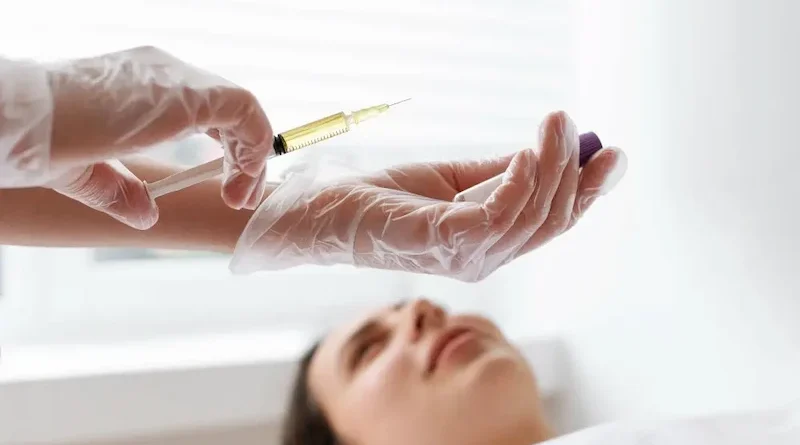Tesamorelin vs. Ipamorelin: A Comprehensive Comparison
When considering therapies for weight management and muscle growth, Tesamorelin and Ipamorelin emerge as significant contenders. These two compounds are part of a class of drugs known as growth hormone-releasing peptides (GHRPs), which work by stimulating the body’s natural production of growth hormone. They both carry the promise of not just enhancing body composition but also potentially offering other health benefits. Understanding the unique properties, side effects, efficacy, and administration of each can empower individuals and healthcare providers to make informed choices regarding treatment options. In this article, we’ll delve into a comprehensive comparison of Tesamorelin and Ipamorelin, providing insights into their uses and implications for health.
Understanding Tesamorelin: Benefits and Mechanism of Action
Tesamorelin is a growth hormone–releasing hormone (GHRH) analog used to reduce abdominal and visceral fat, particularly in patients with HIV-related lipodystrophy. By stimulating growth hormone release, it improves metabolism and body composition, and may positively influence cardiovascular health by enhancing lipid profiles and insulin sensitivity.
Its mechanism involves binding to GHRH receptors in the pituitary gland, triggering growth hormone production that supports muscle growth and fat breakdown. However, treatment requires careful medical supervision due to its injectable form and potential drug interactions. When comparing Tesamorelin and Ipamorelin, both influence growth hormone activity but differ in their mechanisms and clinical applications.
Exploring Ipamorelin: Its Role and Advantages in the Body
Ipamorelin is a growth hormone-releasing peptide valued for its selectivity and safety. Unlike other GHRPs, it triggers growth hormone release without significantly raising cortisol or prolactin, lowering the risk of unwanted side effects. This makes it suitable for long-term use in therapies aimed at steady growth hormone elevation. By supporting lean muscle development and aiding recovery from physical stress or injuries, Ipamorelin appeals to athletes, bodybuilders, and those seeking anti-aging benefits such as improved skin elasticity and fewer wrinkles.
Its mechanism involves stimulating the ghrelin receptor, mimicking ghrelin’s pathway without causing increased appetite. This activation prompts the pituitary gland to release growth hormone, fueling anabolic processes that aid performance and recovery. Administered primarily through subcutaneous injections, Ipamorelin offers a practical and well-tolerated alternative to traditional hormone replacement options.
Tesamorelin vs. Ipamorelin: Side Effects and Safety Profile Comparison
Tesamorelin and Ipamorelin share relatively safe profiles but differ in their side effects. Tesamorelin may lead to injection site reactions, muscle aches, and elevated blood sugar, making monitoring essential for patients with existing conditions or concurrent therapies. In contrast, Ipamorelin’s selective action results in fewer issues, though headaches, light-headedness, and temporary fatigue may still occur. Patients are advised to report persistent symptoms to ensure proper care.
Comparative studies and patient data remain important for understanding how each drug affects different populations. Physicians evaluate benefits against risks, tailoring treatment to individual health needs. Both medications require prescription oversight, with careful monitoring and education ensuring safety and treatment effectiveness.
Efficacy in Weight Loss and Muscle Growth: Tesamorelin and Ipamorelin Face-off
Tesamorelin and Ipamorelin stand out in the fields of weight loss and muscle growth for their distinct benefits. Tesamorelin is proven to reduce visceral adipose tissue, a key driver of metabolic disorders, while also decreasing waist circumference and improving body composition. Clinical studies highlight its effectiveness in targeting abdominal obesity, making it valuable for those struggling with fat concentrated around the midsection.
Ipamorelin, in contrast, is noted for supporting lean muscle development and faster recovery. Boosting growth hormone levels aids athletes and bodybuilders in training more effectively while promoting muscle gains. Results with either peptide vary depending on diet, exercise, and genetics, but research continues to refine their long-term potential.
Dosage and Administration: Navigating the Use of Tesamorelin and Ipamorelin
Dosage and administration are central to the safe and effective use of Tesamorelin and Ipamorelin. Tesamorelin is usually given as a daily injection with standardized dosing to ensure consistent results, while adjustments may be required based on individual response and lab findings. Patients are guided on proper injection techniques and adherence, as missed or incorrect doses can reduce benefits and increase risks. Regular monitoring helps optimize outcomes and maintain safety.
Ipamorelin is often administered in cycles, tailored to training, recovery, or wellness goals. Its dosing can be customized for muscle growth, fat loss, or general health, with follow-ups ensuring effectiveness. Both peptides must be prescribed within regulatory guidelines, as misuse or off-label use can pose legal and health risks.
Overall, while Tesamorelin and Ipamorelin offer potential benefits for weight management and muscle growth, their effectiveness is subject to appropriate dosage and administration. Patients considering these therapies should consult a healthcare provider for a personalized approach to ensure safety and efficacy. With a clear understanding of the comparative aspects of Tesamorelin and Ipamorelin, those seeking improvements in body composition can make well-informed decisions.
Visit the rest of the site for more interesting and useful articles.

